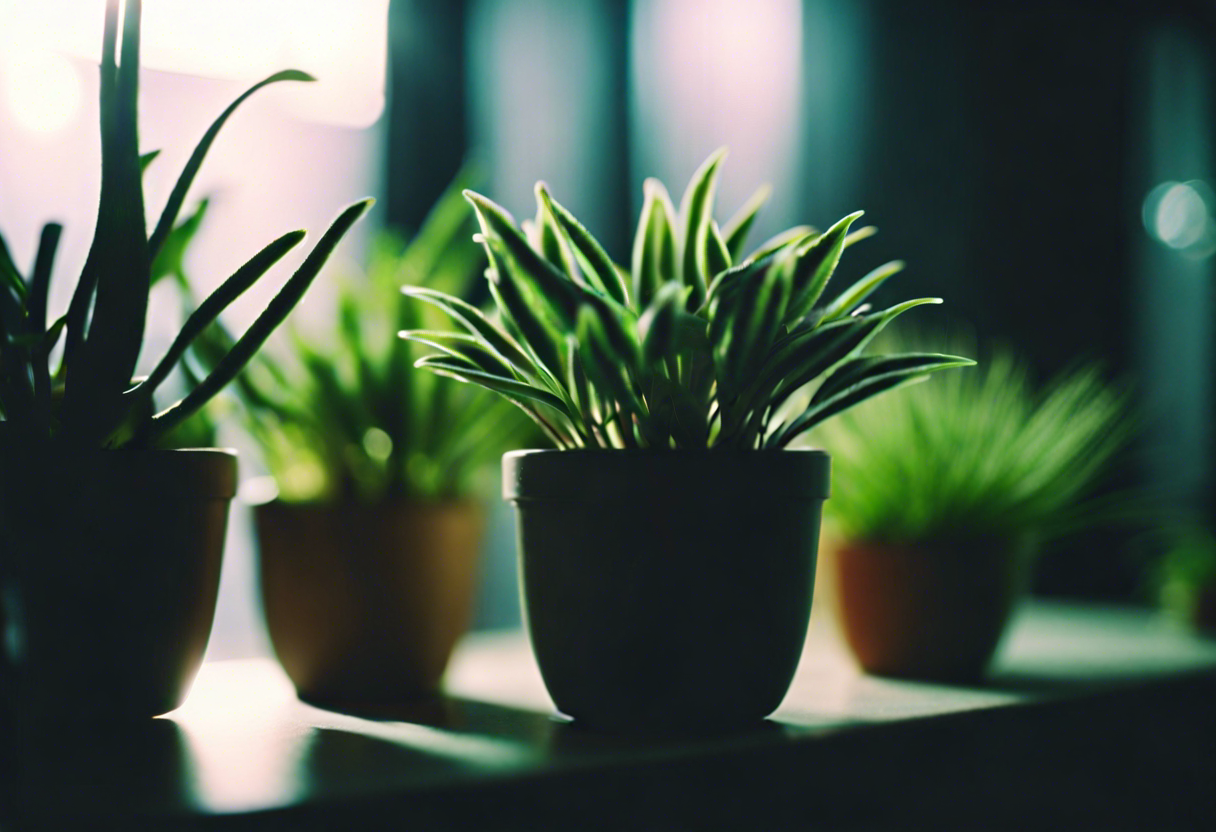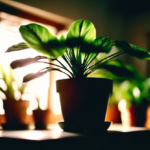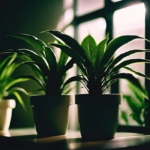The Best Indoor Low Light Plants for Different Room Types
Adding indoor plants not only enhances the aesthetics of your home but also provides numerous health benefits. However, not all plants thrive in low light conditions. If you have areas in your home that lack natural light, there are still plenty of options when it comes to choosing indoor low light plants. Let’s explore some of the best low light plants for different room types.
1. Snake plant (Sansevieria trifasciata): Snake plants are known for their ability to survive in low light conditions. They are perfect for bedrooms, offices, or any area with minimal natural light. Snake plants have striking sword-shaped leaves and can tolerate neglect, making them an ideal choice for busy individuals.
2. Pothos (Epipremnum aureum): Pothos is another excellent choice for low light environments, making it suitable for bathrooms or basements. With its trailing vines and heart-shaped leaves, pothos adds a touch of greenery to any space. It is also known for its air-purifying properties, helping to improve the indoor air quality.
3. ZZ plant (Zamioculcas zamiifolia): The ZZ plant is a resilient plant that can thrive in low light conditions. Its dark green, glossy leaves add a touch of elegance to any room. ZZ plants are perfect for adding a pop of green to your home office or living room.
4. Peace lily (Spathiphyllum wallisii): The peace lily is a popular choice for indoor plants due to its ability to tolerate low light. It features dark green leaves and stunning white flowers. Place a peace lily in your bedroom or living room to create a calming and serene atmosphere.
5. Dracaena (Dracaena marginata): Dracaena plants are known for their air-purifying qualities and can thrive in low light conditions. With their long, slender leaves and red-edged foliage, dracaenas add a touch of tropical vibes to any room. They are versatile and can be placed in various spaces, including the kitchen or dining area.
Remember, while these plants can tolerate low light conditions, it’s important to provide them with indirect sunlight whenever possible. Rotate them every few weeks to ensure even growth and avoid leggy or lopsided plants. Additionally, make sure to water them appropriately, allowing the soil to dry out before the next watering.
Indoor low light plants into your home not only brings a sense of tranquility but also improves air quality and overall well-being. Choose the best low light plants based on your room type, and enjoy the beauty and benefits they bring to your living space.
The Best Care Tips for Indoor Low Light Plants: Ensure their Continued Health and Growth
Indoor low light plants are a popular choice for many homeowners, as they add a touch of greenery to any room while requiring minimal sunlight. These plants thrive in areas with limited natural light, making them ideal for spaces such as offices, bathrooms, and bedrooms. However, it is essential to understand how to properly care for these plants to ensure their health and longevity.
One of the most critical factors in caring for indoor low light plants is finding the right location for them. While they can tolerate low light conditions, it’s important to place them near a window or in a well-lit area to provide the little light they do require. Make sure not to expose them to direct sunlight, as it can damage their leaves.
Proper watering is another essential aspect of maintaining indoor low light plants. These plants typically require less water compared to their counterparts that thrive in brighter conditions. It’s crucial to avoid overwatering, as it can lead to root rot and other issues. Before watering, check the moisture level of the soil by inserting your finger into it. If it feels dry, water the plant thoroughly. If the soil is still moist, it’s best to wait before watering again.
In addition to watering, indoor low light plants benefit from regular misting. This extra moisture can help simulate the humid conditions that some of these plants would naturally experience in their native environments. Use a spray bottle to mist the leaves, being careful not to saturate them completely. This can also help remove any dust or debris that may have settled on the foliage.
Another care tip for indoor low light plants is fertilizing. While they generally require less fertilization compared to plants in brighter environments, they still benefit from occasional feeding. Choose a balanced, water-soluble fertilizer and dilute it according to the package instructions. Apply the fertilizer during the growing season, typically spring and summer, every four to six weeks.
Regular pruning is essential for maintaining the health and shape of indoor low light plants. Trim any yellow or wilted leaves to encourage new growth and prevent disease from spreading. Additionally, pruning helps control the size of the plant and keeps it looking neat and tidy.
By following these care tips, you can ensure that your indoor low light plants thrive and continue to bring beauty and tranquility to your living spaces. Remember to pay attention to their location, watering needs, misting, fertilizing, and regular pruning. With the right care, these plants can flourish and enhance the ambiance of any room in your home.
5 Unique Indoor Low Light Plants for an Aesthetically Pleasing Home
Indoor plants not only add a touch of greenery to your home but also provide numerous benefits to your well-being. If you have a low light environment, don’t worry! There are plenty of unique indoor low light plants that can thrive and bring beauty to your space. Here are five exceptional options that will make your home aesthetically pleasing:
1. Snake Plant (Sansevieria Trifasciata)
The Snake Plant, also known as Mother-in-Law’s Tongue, is a popular choice for low light environments. Its long, upright leaves have a striking appearance and come in various shades of green. This resilient plant requires minimal care and can even tolerate neglect, making it perfect for busy individuals. The Snake Plant also has air-purifying qualities, removing toxins from the air and promoting better indoor air quality.
2. ZZ Plant (Zamioculcas Zamiifolia)
The ZZ Plant is another hardy indoor plant that thrives in low light conditions. Its glossy, dark green leaves grow in a graceful, upright manner, adding a touch of elegance to any room. This plant is known for its ability to tolerate low light and irregular watering, making it ideal for those who tend to forget their plant care routines. The ZZ Plant is also resilient against pests and diseases, ensuring long-lasting beauty in your home.
3. Cast Iron Plant (Aspidistra Elatior)
The Cast Iron Plant lives up to its name – it’s tough and can withstand almost any condition, including low light and neglect. With its wide, dark green leaves, this plant adds a lush and tropical vibe to your home. The Cast Iron Plant is also known for its ability to cleanse the air, removing toxins and improving the overall air quality in your space.
4. Peace Lily (Spathiphyllum)
The Peace Lily is a popular choice for its elegant white flowers that bloom amidst its glossy, dark green leaves. This plant thrives in low to moderate light and adds a touch of serenity to any room. Apart from its beauty, the Peace Lily is excellent at purifying the air, removing harmful toxins like formaldehyde, benzene, and trichloroethylene.
5. Chinese Evergreen (Aglaonema)
The Chinese Evergreen is a versatile plant that comes in a wide range of varieties, each offering unique leaf patterns. It can adapt well to low light conditions and requires minimal maintenance. The Chinese Evergreen not only adds visual interest to your space but also helps purify the air by removing pollutants.
With these five unique indoor low light plants, you can transform your home into a lush and aesthetically pleasing sanctuary. Remember to consider the specific lighting conditions of each room when choosing your plants and provide them with proper care to ensure their long-term health and beauty. Happy plant shopping!
Benefits of Indoor Low Light Plants: Improving Air Quality and Well-being
Indoor low light plants not only add a touch of greenery to your home but also offer numerous benefits for your overall well-being. These plants thrive in environments with limited access to natural light, making them perfect for rooms that do not receive much sunlight. Apart from their aesthetic appeal, indoor low light plants also contribute to improving air quality and creating a more serene and calming atmosphere.
One of the major benefits of indoor low light plants is their ability to purify the air. Plants naturally absorb carbon dioxide and release oxygen through a process called photosynthesis. However, certain indoor low light plants, such as snake plants (Sansevieria) and peace lilies (Spathiphyllum), are particularly effective at removing harmful pollutants from the air, including benzene, formaldehyde, and trichloroethylene. By incorporating these plants into your indoor spaces, you can significantly reduce indoor air pollution and improve the overall air quality in your home.
Furthermore, indoor low light plants have been known to enhance well-being and reduce stress levels. Studies have shown that being surrounded by plants can have a positive impact on mental health, helping to reduce anxiety and improve mood. The presence of greenery indoors has a calming effect on the mind, promoting relaxation and a sense of tranquility. Whether you choose to place a low light plant in your bedroom, living room, or office space, having these plants around can create a more soothing and rejuvenating environment.
Another benefit of indoor low light plants is their ability to increase humidity levels in dry indoor spaces. Certain plants, such as Boston ferns (Nephrolepis exaltata) and spider plants (Chlorophytum comosum), release moisture into the surrounding air through a process called transpiration. This can be particularly beneficial during the winter months when indoor heating tends to dry out the air, leading to respiratory problems and dry skin. By placing low light plants strategically in your home, you can help maintain a more comfortable and humid environment.
Indoor low light plants into your home decor not only brings a touch of nature indoors but also offers a range of benefits for your well-being. From improving air quality to reducing stress levels and increasing humidity, these plants have the power to transform your indoor spaces into havens of health and tranquility. So, why not consider adding a few of these low light plants to your home and reap the rewards of a green and thriving environment?
Creating a Serene Environment with Indoor Low Light Plants: Design Ideas and Inspiration
Indoor low light plants not only bring a touch of nature into your home but also help create a serene and tranquil environment. With their ability to thrive in areas with minimal sunlight, these plants can be incorporated into various room types, allowing you to design spaces that exude calmness and tranquility.
When it comes to choosing indoor low light plants for your home, consider the specific room types and their design requirements. In living rooms or family rooms, where you often relax and entertain guests, large plants such as the snake plant or peace lily can make a bold statement while adding a sense of calmness. Their lush green foliage and air-purifying properties create a refreshing atmosphere, promoting relaxation and well-being.
For bedrooms, which should be a serene oasis for rest and rejuvenation, consider incorporating smaller-sized plants such as the pothos or spider plant. These plants not only require minimal light but also release oxygen at night, promoting better sleep quality. Their cascading vines and delicate leaves add a touch of elegance and serenity to any bedroom decor.
In home offices or study spaces, where focus and productivity are key, low light plants like the ZZ plant or dracaena can be excellent choices. These plants require minimal care and can thrive even in dimly lit areas, making them perfect for indoor office environments. Their vibrant green leaves create a sense of freshness and vitality, helping to create an inviting and inspiring workspace.
If you have a bathroom with limited natural light, consider adding plants such as the snake plant or ferns, which thrive in high humidity and low light conditions. These plants not only add a touch of greenery but also help purify the air, making your bathroom feel like a luxurious spa retreat.
When designing your indoor low light plant display, consider incorporating different textures and heights to create visual interest. Group plants together on shelves or use hanging planters to make the most of vertical spaces. Mixing different plant varieties can also add depth and dimension to your arrangement.
Remember to consider the overall color scheme of your room and choose plants that complement the existing decor. For a cohesive look, opt for plants with similar leaf colors or contrasting foliage that adds a pop of color to the space.
indoor low light plants are a versatile and beautiful addition to any home decor. By carefully selecting the right plants for different room types and incorporating them into your design, you can create a serene and tranquil environment that promotes relaxation and well-being. So go ahead and bring the beauty of nature indoors with these inspiring design ideas.
Conclusion
To create an inviting and serene environment in your home, consider incorporating indoor low light plants into your decor. These plants are not only aesthetically pleasing but also offer numerous benefits, from improving air quality to enhancing overall well-being. By selecting the right plants for different room types and taking proper care of them, you can enjoy the beauty and tranquility that these plants bring to your living space.
For different room types, there are specific indoor low light plants that thrive best. In low-light bedrooms, plants like pothos and snake plants are excellent choices as they purify the air and are known to promote better sleep. For bathrooms with limited natural light, ferns such as Boston fern or maidenhair fern can thrive in the humid environment and add a touch of elegance. In the living room or common areas, peace lilies and ZZ plants are perfect choices as they are both low maintenance and visually striking.
Caring for indoor low light plants may seem intimidating, but with a few tips and tricks, anyone can have a green thumb. These plants typically require less water and indirect sunlight. Watering them when the top layer of soil is dry and placing them near windows without direct sunlight can help maintain their health. Regularly dusting their foliage and occasionally misting them with water can also ensure they thrive.
If you are seeking unique additions to your indoor garden, consider these five low light plants. The cast iron plant, with its dark green foliage, is a hardy plant that can tolerate neglect and low light conditions. The Chinese evergreen adds a pop of color with its variegated patterns and its ability to adapt to different light levels. Another interesting choice is the nerve plant, known for its vibrant foliage and its preference for low light and high humidity. The spider plant, with its cascading leaves, is not only visually appealing but also an air purifier. the peacock plant, with its striking red and green leaves, is an eye-catching choice for any room.
The benefits of indoor low light plants extend beyond aesthetics. These plants play a crucial role in improving air quality by removing toxins and releasing oxygen. They have been found to reduce stress and promote overall well-being. In addition, studies have shown that being surrounded by greenery indoors can enhance focus, productivity, and creative thinking.
To create a serene environment with indoor low light plants, consider these design ideas and draw inspiration from nature. Grouping plants of different heights and textures can add depth and visual interest to a space. Using hanging planters or wall-mounted shelves can maximize floor space while bringing greenery to eye level. Additionally, incorporating plants into existing decor elements, such as bookshelves or side tables, can seamlessly merge nature with your existing style.
Indoor low light plants are an excellent choice for enhancing the ambiance and well-being of any space. By carefully selecting the right plants for different room types, mastering their care, and exploring unique options, you can create an aesthetically pleasing and tranquil home environment. Embrace the benefits they offer, from improving air quality to fostering a sense of peace and serenity, and let your indoor low light plants be the natural source of beauty and harmony in your home.


